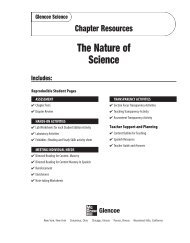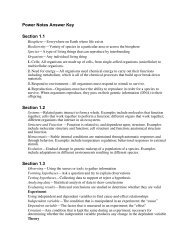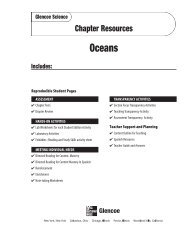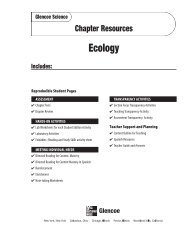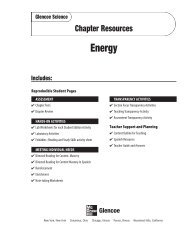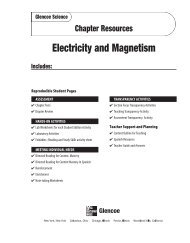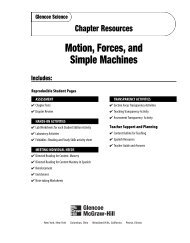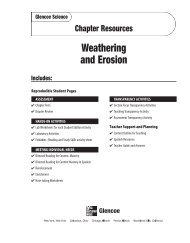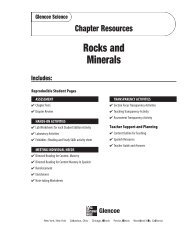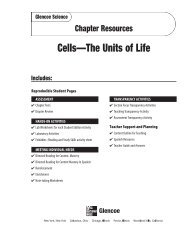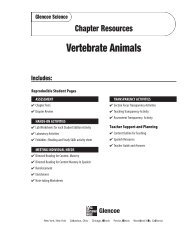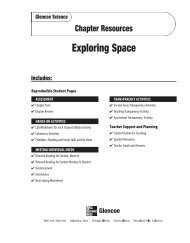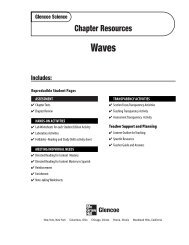Content Outline for Teaching - Potosi School District - Home
Content Outline for Teaching - Potosi School District - Home
Content Outline for Teaching - Potosi School District - Home
Create successful ePaper yourself
Turn your PDF publications into a flip-book with our unique Google optimized e-Paper software.
17<br />
Section 3<br />
<strong>Content</strong> <strong>Outline</strong><br />
<strong>for</strong> <strong>Teaching</strong><br />
Mollusks and Segmented Worms<br />
Invertebrate Animals<br />
Underlined words and<br />
phrases are to be filled<br />
in by students on the<br />
Note-taking Worksheet.<br />
A. Characteristics of mollusks—invertebrates usually with shells protecting their<br />
soft bodies, mantle, and muscular foot<br />
1. Mantle—tissue that covers a mollusk’s soft body and that may produce a shell<br />
2. Lungs or gills exchange carbon dioxide from the animal <strong>for</strong> oxygen in the air<br />
or water.<br />
3. Many mollusks use a radula,ascratchy tongue-like organ, to help them eat.<br />
4. Some mollusks have an open circulatory system which washes blood over<br />
organs and lacks blood vessels.<br />
B. Types of Mollusks<br />
1. Gastropods—most have one shell<br />
a. Live in water or on land<br />
b. Move by gliding their large muscular foot along a trail of mucus<br />
2. Bivalves—have two shells<br />
a. Large muscles open and close shell halves<br />
b. Water animals that filter feed<br />
c. Use gills to remove foot from water<br />
3. Cephalopods—have no shell<br />
a. Have a foot divided into tentacles with suckers<br />
b. Move by using a mantle to quickly squeeze water through a funnel-like<br />
siphon<br />
c. Have a closed circulatory system with blood vessels<br />
C. Segmented Worms—also called annelids,have repeating segments, a closed circulatory<br />
system, and digest food in a complete system with two openings<br />
1. Earthworms—have more than 100 body segments<br />
a. Use external bristle-like setae and muscles to move<br />
b. Eat organic material in soil<br />
c. Exchange carbon dioxide and oxygen through mucus-covered skin<br />
Invertebrate Animals 56




